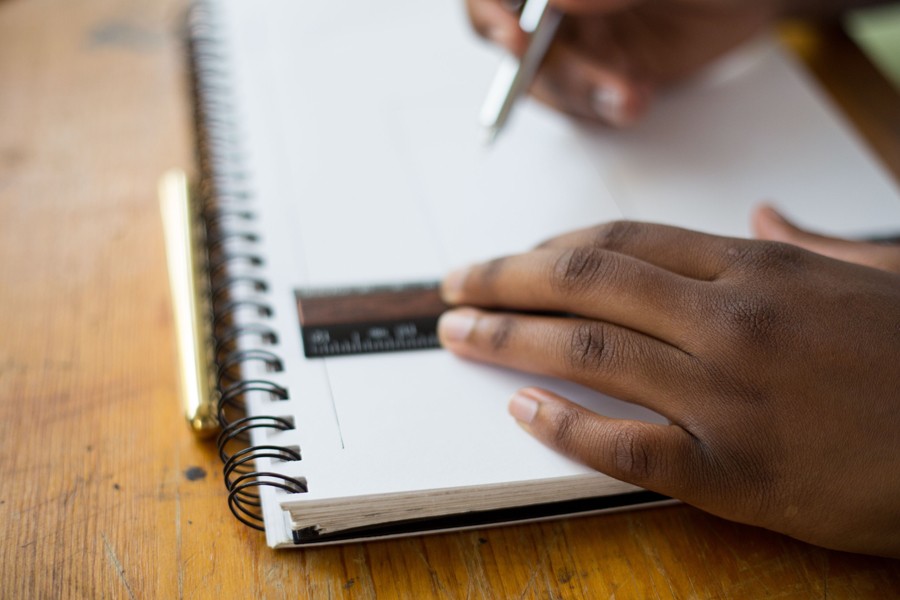What drawings does my project need?
Home Extension Conversions Design Ideas How it worksWhichever type of home renovation project you might be planning, architectural drawings will always be a key part of getting your design built. Still, when planning your project, it can be overwhelming to find out which types of drawings are important and at what stage they’re needed. To help you get started, we’ve put together an overview of the kinds of drawings your project will need - read on below to find out more.
Before you start
- Sketches
Sketches are a great starting point when it comes to realising your design vision, especially if you’ve got lots of different designss in mind. By sketching out an outline of what you like so far, you can easily test which of your ideas work ‘on paper’. The sketches won’t necessarily be to scale, but will give you the opportunity to experiment with different suggestions and see how your spaces would then work together, as part of our home as whole, rather than just as a space on its own.
Getting the ball rolling on your renovation
- Survey Drawings
Survey drawings are used to document your existing property, as it currently stands. They include accurate measurements of your current home so that you and your architect know the necessary boundaries and measurements that you’re working with. These will likely include:
-
- Existing drawings of your current property: these will usually include a set of floor plans, sections and elevations.
- Location plan: a map showing the location of the property you’re working on, and its surrounding context.
- Concept drawings
Concept drawings will help your architect design your project with you. They are based on accurate information and consider important design factors, such as natural lighting and the function of each space, to build on and develop your design further. Typically designed in 3D, concept drawings tend to show the outline ideas from your sketches in more detail, helping everyone on the project to clearly visualise the vision and goals for the project.
Final designs & gaining approval
- Proposed drawings
Once you’ve agreed your home design with your architect, this will be the first set of drawings to accurately represent your proposed project in full. These will usually feature the precise dimensions of every space, key design elements and local context. In most cases, these are also the drawings that are used to apply for planning permission, and are submitted to your Local Planning Authority. These will likely include:
-
- Proposed floor plans: these show the interior layout of your proposed project.
- Site plan (sometimes known as a block plan): this shows your proposed project in detail, including site boundaries, nearby roads, buildings and any landscaping details.
- Proposed elevation drawings: these illustrate what the front, back or sides of your project will look like from the outside. They usually include exterior finishes and an idea of materials, and will give you, your Local Planning Authority and eventually your builder an idea of how the finished project will look.
- Proposed section drawing: this shows a vertical cut-through of your proposed project, and the connection between the different parts of the building.
- 3D visuals
Though these are not essentials, we often recommend that our homeowners consider getting 3D visuals of their project. When drawing up your proposed project, it can be difficult to envision the new spaces and design using just plans on paper.
Here 3D visuals can help bring these drawings to life, and offer a first glimpse of your completed project, from both the exterior and interior. This will not only help you get a sense of what your dream home will be like, but also provide reassurance when it comes to making sure that your project is just as you’d imagined. We offer this service as an add-on to all our projects, with more information available once you’ve made your quote or via our ‘How it Works’ page.
At this stage, we often have homeowners ask: “Do I need these drawings if my project doesn’t need planning permission?”
Depending on the size and type of project you’re working on, it may fall under permitted development rights, which means that you won’t need to apply for planning permission. However, even if your project falls under permitted development, we recommend having a complete set of architectural drawings done, as this will enable you to apply for a Lawful Development Certificate (LDC). An LDC gives you proof that your project was lawful and didn’t require planning permission at time of construction. We always recommend this, as planning laws change frequently, and the certificate will offer valuable peace of mind if you want to sell your property later.
Starting on site & staying safe
- Detailed drawings
This second stage of architectural drawings include input from structural engineers and go into much more detail, including structural information, thermal insulation calculations and proof of full compliance with all relevant parts of the Building Regulations.
These drawings will then need to be submitted to your local Building Control department. This stage applies to every project, to ensure that your build meets important health and safety requirements as well as key environmental and accessibility standards. These detailed drawings will also be used later by your chosen builder, in order to construct your project as designed. They usually include:
-
- A vertical section drawing showing construction details: this shows all the technical construction details of your proposed build.
- Detail drawings: these will often be a much larger scale (i.e. more zoomed in, and closer to life size) such as 1:5 to give the exact dimensions and make-up of each wall, window and junction in your project, both internally and externally.
Once you’re in your dream home
- As built drawings!
As a bonus, you may want to consider having a set of as-built drawings prepared. These are revised drawings that are completed after construction is done, and therefore include any unforeseen changes that might have had to be made on-site. As the most up to date set of drawings of your completed home, these are valuable when it comes to home maintenance and planning future projects around your home or plot - both for you and potential buyers if you later decide to sell.
Can I produce the drawings myself?
Yes, you can put together these drawings yourself, however this can be very time consuming, especially if this is your first renovation project. In general, we always recommend working with an architect - their additional input will not only help you to further develop your ideas for the design of your project, but will also ensure the accuracy and relevancy of your different drawing sets.
If you’re unsure what drawings your specific project will need, our team are here to help – simply book a complimentary consultation call with one of our architects or designers and we’ll be able to check for you and guide you through the requirements.


Let’s get started!
Our unique 3-in-1 quote calculates architectural services, construction costs and the value you could add to your home. Plus, we pride ourselves on offering unbeatable value.
